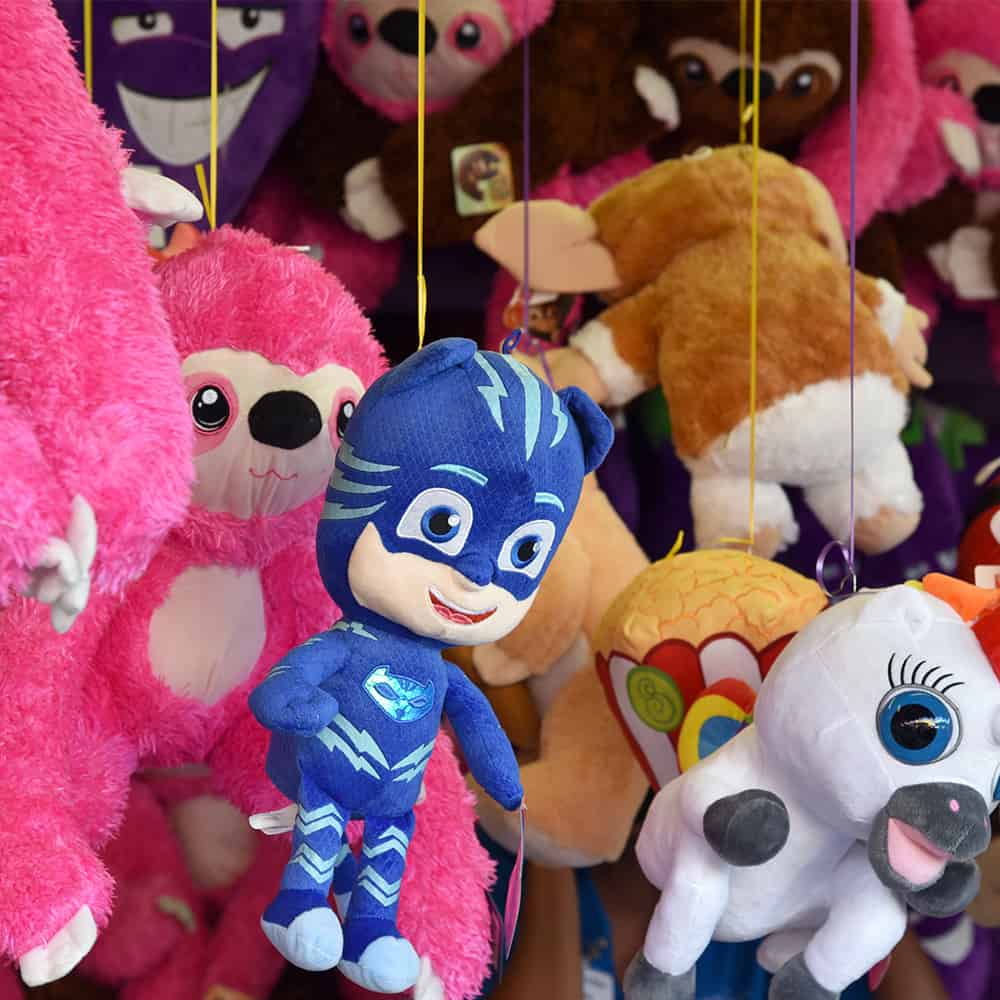How To Make More Money In Your Arcade Game Room
In my recent travels, I have often been surprised at how many people need help understanding the importance of their game room payout percentage and redemption markup. They need to pay more attention to these two things’ direct impact on their revenue and bottom line. Although most arcades are generally not the attraction that brings customers into an FEC, they ARE typically a significant source of overall revenue.
Often, people spend most of their time focused on areas where they have the most knowledge and comfort, but that’s only sometimes the area that will impact your bottom line. If your arcade makes up 50% of your revenue, and your snack bar makes up 15% of your revenue, but you spend most of your time focused on your food cost, you are likely not maximizing time to increase your bottom line. If you save a few cents on French Fries, will that have as much of a financial impact as if you can increase your game room revenue by 10%?
Managing Your Game Room
When I owned and managed FECs, I often had to explain this to my team. Our F&B (food & beverage) revenue was a fraction of our game room revenue, but F&B was a familiar area to them so that they would spend most of their efforts on it. A big reason for this was that they needed to understand all the different variables that went into a game room. F&B is relatively simple to understand. If it costs me .30 to make an item, and I sell that item for $1.00, my Cost of Goods sold is 30%. Your variables include the price of the item, the cost of the item, and waste. To increase the bottom line, you can shop for cheaper products, reduce waste, adjust portions, or raise the price. Overall, the concept of F&B is simple to understand.
An arcade is slightly different. Some games give out tickets/redemption points, and some give out prizes. How much is a ticket/point worth? How many tickets/points should the games give out? How many tickets/points should the prizes cost? What is the correlation between ticket/point payout and redemption prize markup? I can’t tell you how many redemption counters I’ve seen where an employee puts a ticket number on a prize without knowing the cost of the prize.
I will break it down for you here. If you already know this, you may consider sharing it with your team so they understand its importance.
Game Room Payouts/ Redemption Markup
In a game room, there are two main variables that you can adjust. How you adjust these areas will directly affect revenue and the guest’s perceived value.
- Game room payout – This is how many tickets/points your overall game room pays out
- Redemption markup – This is how much you are marking up your prizes
This is a delicate balance. If your game room pays out too high, you will lose money. There are several ways to adjust this; both will affect your revenue and guests’ perceived value. You can change the price-per-play and/or the ticket payout.
Some locations, like Nickel Arcades and FECs, with a young demographic, tend to keep the price per play low and, therefore, the ticket payouts low. There are pluses and minuses to low-price-per-play/low-payout games.
Positives:
- A higher perceived value when you purchase your credits or include credits in a party package.
- A higher perceived value in the value you receive in terms of time spent playing per dollar.
- Lower cost on tickets (if you are still using paper tickets).
Negatives:
- When jackpots are low, there is less excitement, and most games only give a few tickets/points.
- More work to earn tickets/points for higher-priced items.
- It often creates a lower perceived value upon leaving your redemption area, which is a lasting impression.
- Running promotions and “Happy Hour” in your game room is more challenging.
I recommend a low markup on your redemption items if you use this model. Nothing is worse for a guest’s perceived value than spending $40.00 and walking away with one mini Tootsie roll and a finger trap.
Entertainment centers that are more adult-oriented tend to set their credits to play higher and their ticket/point payouts higher. In this environment, $5 or $10 will only last for a little while, but you will receive more tickets/points per play, and the jackpots are higher. Here, the lower perceived value often comes from the initial purchase of credits and the need for more time spent per dollar, but it can usually be overcome with high ticket payouts and great prizes. Your lasting impression is typically favorable if you walk away with a great prize.

Understanding Your Demographics
You need to know your primary demographic to determine your game room’s best pricing and ticket payouts. The sweet spot for most people will typically fall between the two examples above. Ideally, you want excellent payouts and see many winners in your location with decent-priced games that allow for a decent amount of gameplay time. So, how do you determine this “sweet spot” for your location? First, ask your arcade games distributor what they recommend for the settings.
That’s a good starting point. Next, track the revenues on that game for a while. You should start to see a trend. Now, begin to experiment. What happens to the revenue when you raise the price? What happens to the revenue when you increase the ticket payout? These aren’t the only variables that determine the game’s profitability. The revenue of each game can also be affected by maintenance issues and location in your game room. A poorly located game or game that is dirty or missing bulbs will also affect revenue.
When dialing in your game room, you need a scientific mind to adjust variables and track each adjustment’s effect on your game room. You may be surprised that your games are priced too low or too high or that changing the ticket payout increases/decreases revenue. Sometimes, what you need to do goes against what you might think. For example, getting rid of bad or old games CAN and often WILL increase your overall game room revenue, even with fewer games.
Don’t hang onto old games just because they don’t have any resale value or because they are still “making some money”…they may be losing you money. Another concept that often goes against the grain is that giving out more prizes and tickets can increase your revenue. This is a proven concept. When a game pays out a jackpot or a big prize, that game will not only have a line, but you will often see the person who won buy more credits to try to win again. Winners make players.
Pricing & Ticket Thresholds
Although your pricing and ticket thresholds may differ, there are some guidelines you can use for various games. For the most part, the more “fun factor” a game has, the fewer tickets it will pay out. Games like Alley Rollers and Sports Games are fun to play with or without tickets, so those will be set to a much lower payout than games that are ONLY played to win tickets. A good game room payout percentage is 25-35%.
For ease of discussion, let’s say that your game room is paying out at 30%. That means that for every $10.00 a customer gives you, you give them $3.00 worth of tickets. In this scenario, if you gave them a $3.00 item at your cost, you are already running a 70% profit. But most FECs are not doing that. They are making a profit off the guests in the game room and marking up the items in the redemption counter, often 2-4x the cost.
The next variable controlling revenue is your redemption counter selection and markup. In this example, if we used a penny-per-point value, we could say that the person who spent $10.00 now has 300 tickets. Purchasing a tootsie roll bank for $1.00 and using a 3x markup would make the item 300 tickets. Now, you have made 90% profit off this customer, and they may or may not have left feeling ripped off. You don’t HAVE to gouge customers in the arcade and redemption counter to be profitable.
If you have a high redemption markup, adjust your games to give out more tickets and lower prices, or keep your redemption markup down and make the profits in your arcade. It’s good to lower the markup as you get into the higher-priced items so they are attainable. If someone earned enough tickets for an XBOX at your 70% profit margin, you don’t need to double or triple the price of that item. Think about a graduated approach to your markup. Start with a 2-3x markup for your smaller counter items, then at a certain point, drop down to 1.5-2x, and then down to 1 as you get in the higher priced items.
Think of this area as a retail environment. If it is not neat, clean, organized, and stocked with things people want, you leave money on the table. You’ll lose money if items are not “selling.” The goal is NOT to price your items so high that they never move, so you don’t ever have to re-do or restock your wall or counter. If your game room payout is set correctly, and you have substantial weekly redemption orders, that usually means that you are making money, and that’s a Win-Win situation for you and your guests!
Sign up for our newsletter to be the first to hear about new releases, product promotions, updates, and more!

Amber Lambert is the Regional Sales Representative for Betson Enterprises. She began her career in the amusement industry 12 years ago when she started her own family entertainment center, which she built from the ground up. She has also managed a corporate-owned family entertainment center, held a sales role with an industry supplier, and is active in industry associations.
